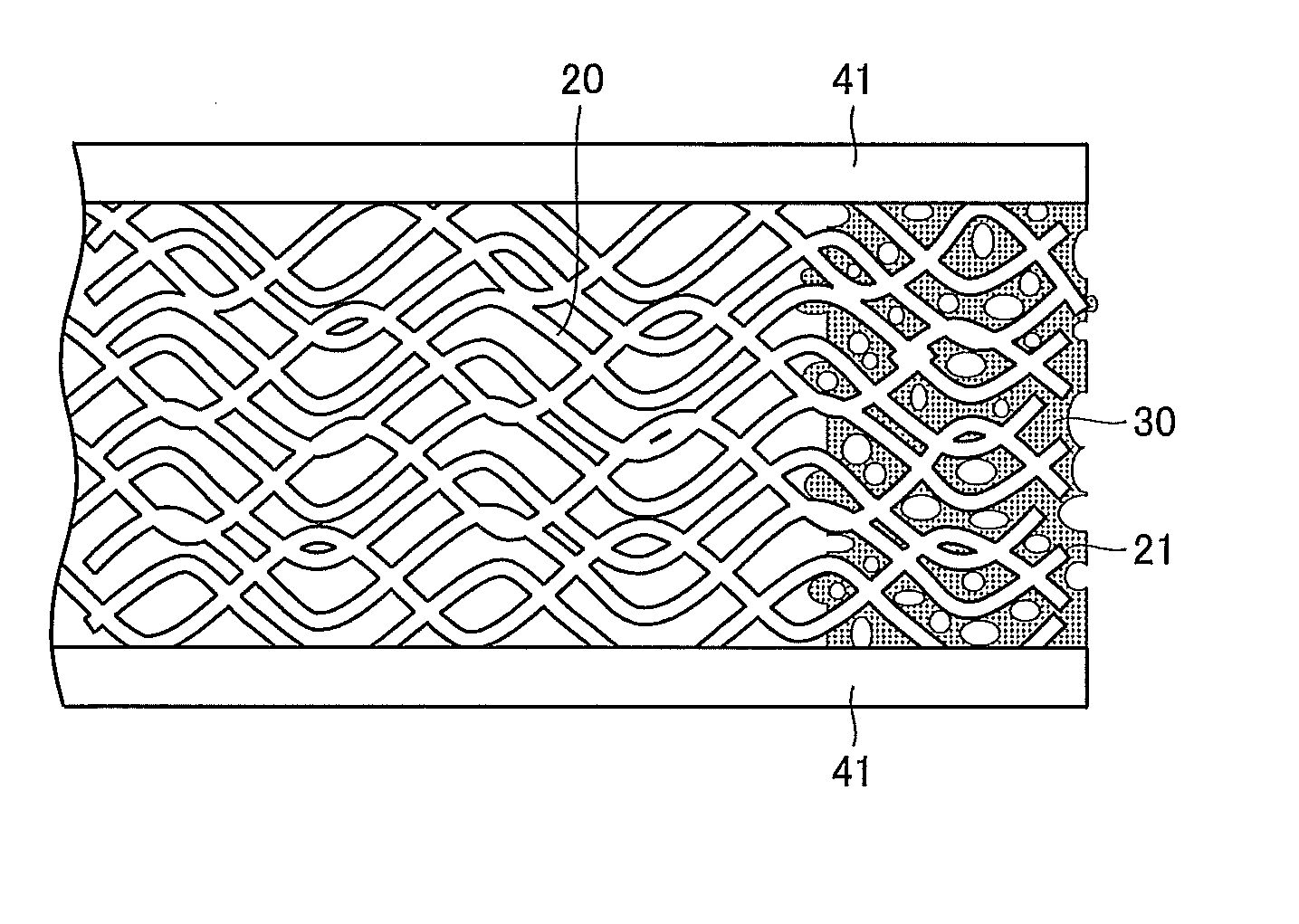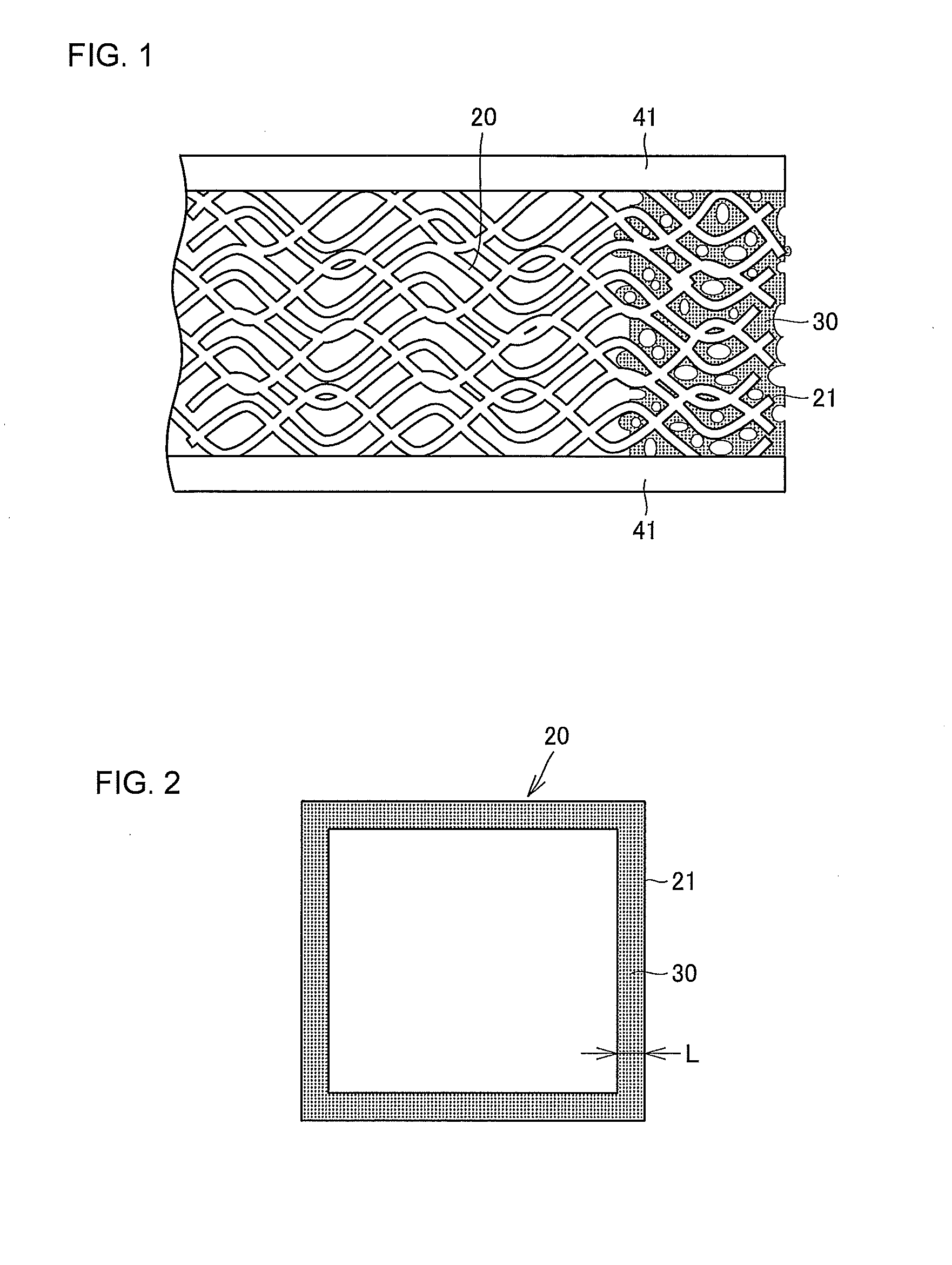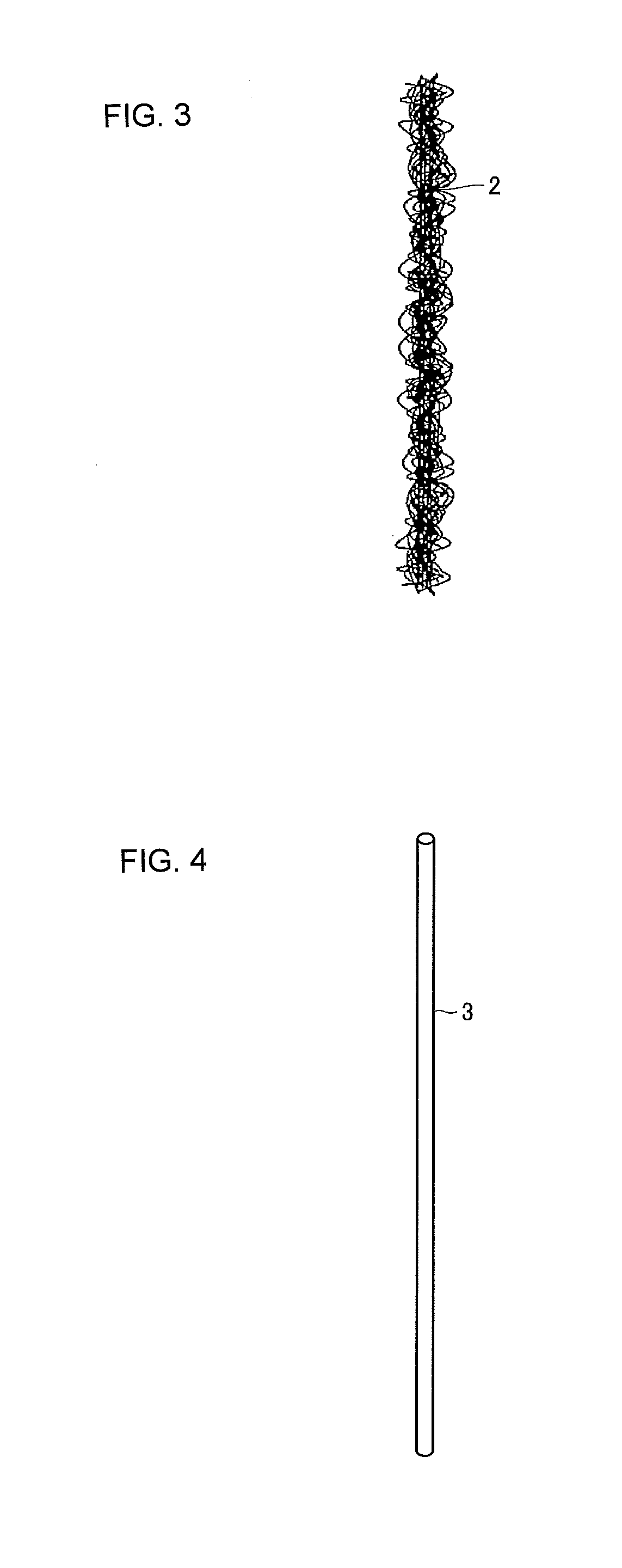Hot press cushioning material
a cushioning material and hot press technology, applied in the field of hot press cushioning materials, can solve the problems of fiber fraying or fluffing at the outer end face of the cushioning material
- Summary
- Abstract
- Description
- Claims
- Application Information
AI Technical Summary
Benefits of technology
Problems solved by technology
Method used
Image
Examples
examples
[0041]Glass woven fabrics “T860” using bulky yarn (made by UNITIKA LTD.) were used as a base material layer. The weft of the woven fabrics is bulky yarn formed by texturizing or bulking 305-tex double twisted yarn of 3,200 E-glass fibers (fiber diameter: 6 μm), and the warp thereof is 135-tex non-texturized or non-bulky double twisted yarn of 1,600 E-glass fibers (fiber diameter: 6 μm). The woven fabrics were formed by weaving the warp and weft in double weave. Each of the woven fabrics had a weight of 850 g / m2, a thickness of 1.02 mm, and a void ratio of 67%. An unvulcanized fluoro rubber solution was prepared by dissolving unvulcanized fluoro rubber at a predetermined concentration in a solvent prepared by mixing butyl acetate and methyl ketone at a mass ratio of 1:1. After immersed in the unvulcanized fluoro rubber solution, each of the glass woven fabrics was squeezed with two rolls. Each of the glass woven fabrics penetrated with the unvulcanized fluoro rubber solution was then...
PUM
| Property | Measurement | Unit |
|---|---|---|
| penetration depth | aaaaa | aaaaa |
| void ratio | aaaaa | aaaaa |
| viscosity | aaaaa | aaaaa |
Abstract
Description
Claims
Application Information
 Login to View More
Login to View More - R&D
- Intellectual Property
- Life Sciences
- Materials
- Tech Scout
- Unparalleled Data Quality
- Higher Quality Content
- 60% Fewer Hallucinations
Browse by: Latest US Patents, China's latest patents, Technical Efficacy Thesaurus, Application Domain, Technology Topic, Popular Technical Reports.
© 2025 PatSnap. All rights reserved.Legal|Privacy policy|Modern Slavery Act Transparency Statement|Sitemap|About US| Contact US: help@patsnap.com



